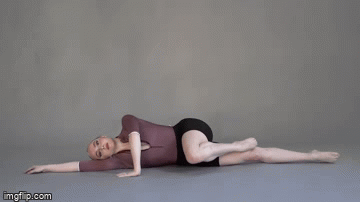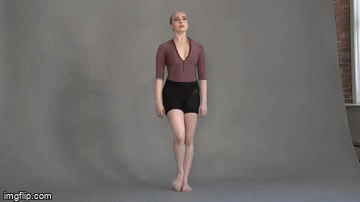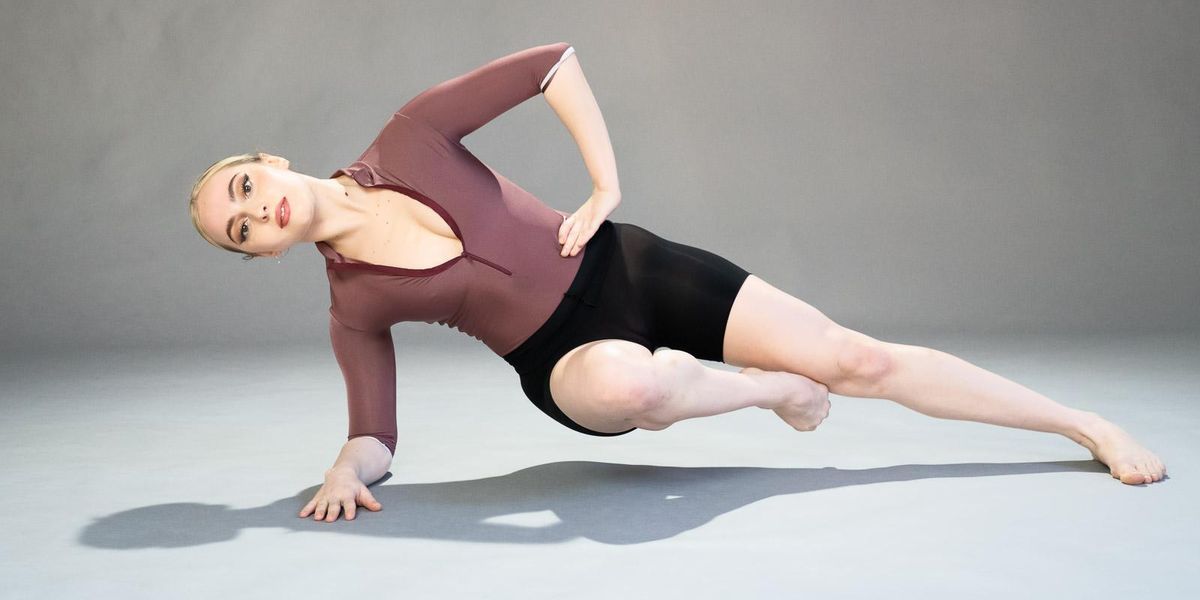3 Exercises to Maximize Your Turnout Potential
Let’s be real: Dancers (particularly ballet dancers) have a lot of feelings about turnout. As a foundational element of ballet technique, it presents high-achieving artists with a theoretical ideal, the fabled 180 degrees, while simultaneously requiring them to work within the practicality of their own anatomy.
Much of accessing your turnout comes through technique, strategy and artistry. But building strength can also help you discover your full rotation potential. Amanda Donahue, athletic trainer for the Joan Phelps Palladino School of Dance at Dean College, says your turnout capability comes down to the strength of your external rotators, the flexibility of your internal rotators and your bony anatomy. “There’s also a huge component with the alignment of the ribs and the pelvis,” she says. Cross-training with these foundational exercises can help you make the most of your natural range.
Side Plank With Passé Isometric Hold
 Shot by Kyle Froman, demonstrated by Carly Bocchino
Shot by Kyle Froman, demonstrated by Carly Bocchino
This variation of a Copenhagen plank strengthens the inner thigh and core muscles.
Starting position:
Begin in a side plank, either on the hand or forearm.
Step 1: Move the bottom leg into a parallel passé.
Step 2: Hold this for 8 to 10 breaths. Inhale gently through your nose, then exhale slowly and fully through your mouth to create good intra-abdominal pressure. By focusing on breathing mechanics during a plank, you will optimize your core strength. “If you think about keeping tension in your abs and expanding in a 360-degree range of motion in your rib cage as you breathe, you’re going to get more bang for your buck,” says Donahue.
Directions:
Complete 3 sets on each side, at least 2 to 3 times per week.
Tip:
If you’re ready for an added challenge, try this with the straight leg resting on a sturdy box or chair. (That’s the full Copenhagen-plank exercise.)
Side-Lying Passé Press
 Shot by Kyle Froman, demonstrated by Carly Bocchino
Shot by Kyle Froman, demonstrated by Carly Bocchino
This exercise, featured in Jacqui Greene Haas’ Dance Anatomy, isolates the feeling of turnout deep in the hip so that there’s no compromise in torso alignment.
Starting position:
Lie on your side with the bottom leg extended straight and the top in a parallel passé. The head can rest on the bottom arm and the top hand can be on the floor in front of the chest for stability. Engage the core, creating a small cave between the abdominals and the floor.
Step 1: Inhale, then exhale while slowly rotating the top leg externally to a turned-out passé. Think of engaging the deep lateral rotators of the hip, inner thighs and the deep abdominals. Keep the pelvis square.
Step 2: Hold the turned-out passé for 5 counts. If you have a partner nearby, have them press on the outer side of the thigh just above the knee while you resist. Exhale completely.
Step 3: Inhale while slowly returning the passé to parallel.
Directions: Complete 2 to 3 sets of 10 to 12 reps on each side. For best results, this exercise should be practiced at least 3 times a week and may be done daily as a warm-up before class. “The goal is to learn how to move the femur within the hip socket without compensation in the pelvis or ribs,” says Donahue. “Quality over quantity!”
Tip:
To maintain a neutral pelvis, practice this with your back close to a wall—if you touch it, you know you’ve gone too far.
Single-Leg Parallel Passé Into External Rotation
 Shot by Kyle Froman, demonstrated by Carly Bocchino
Shot by Kyle Froman, demonstrated by Carly Bocchino
“This is really good for the dancer who compensates by using the resistance of the floor to turn out,” says Donahue.
Starting position:
Begin standing in parallel, bringing one leg into a parallel passé.
Step 1: Inhale and exhale as you begin to rotate both legs externally into a turned-out position. You should feel the deep lateral rotators turn out the standing leg, which rotates the torso and upper body toward the leg in passé. Aim for feeling equal rotation on each side. Keep the first metatarsal, fifth metatarsal and the heel of the standing foot connected to the floor to form a tripod.
Step 2: Inhale as you return to the starting position.
Directions: Complete 8 to 10 reps and 2 to 3 sets on each side, at least 2 to 3 times per week.
Tip:
Record yourself performing this barefoot, and examine the feet and alignment—watch to see that the knee is tracing above the second toe, if any toes are lifting up as you rotate, and if you are keeping good pelvis and rib placement.




